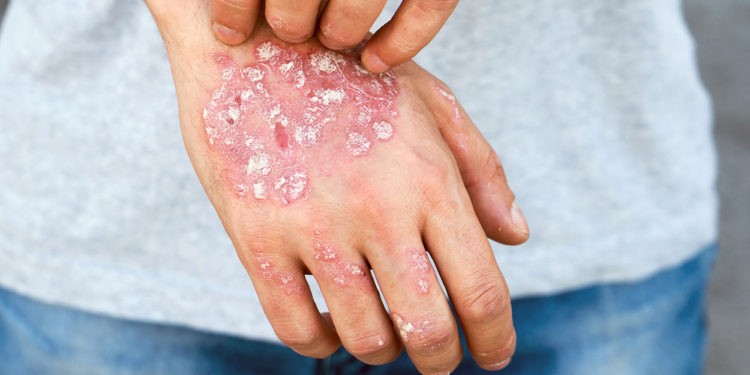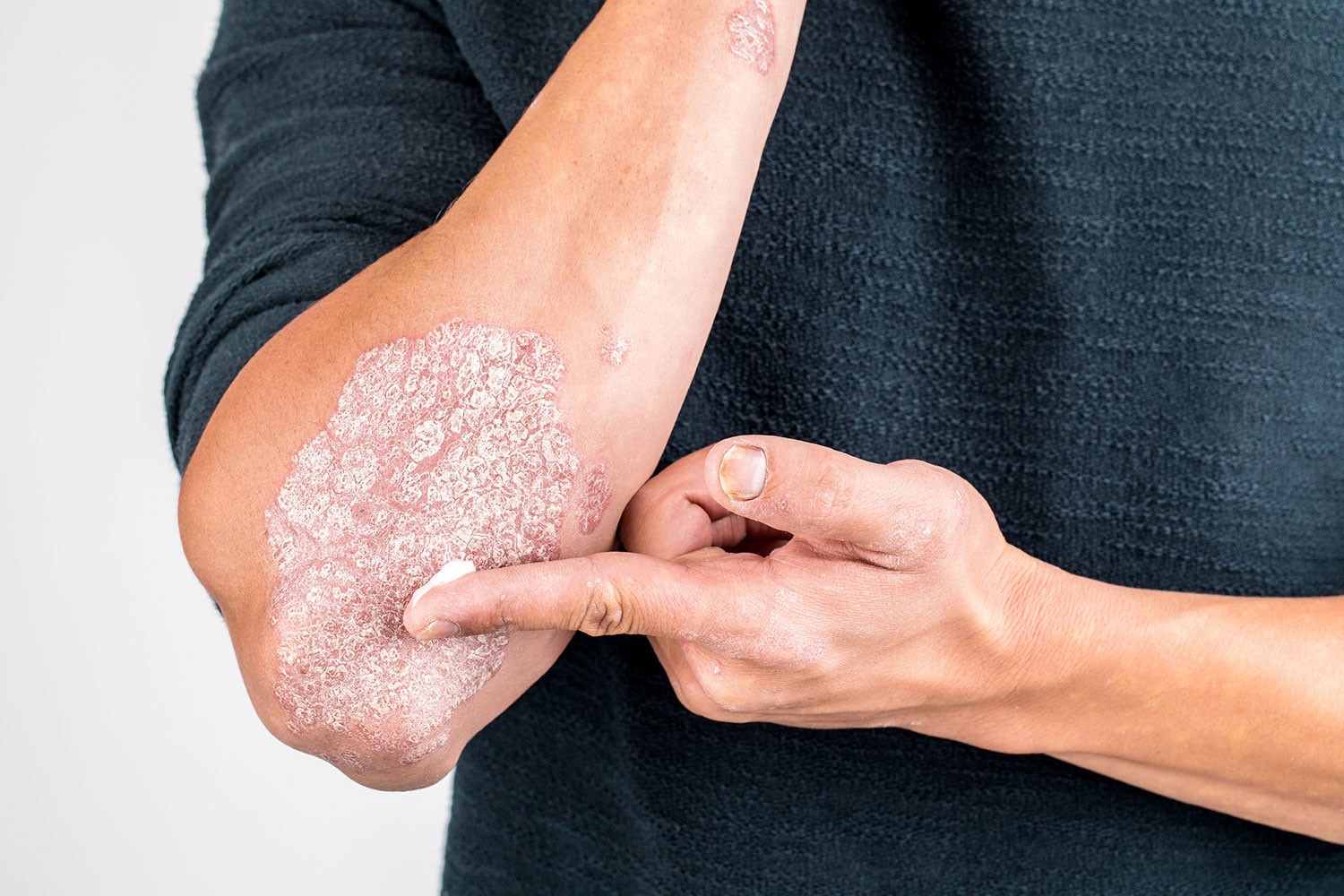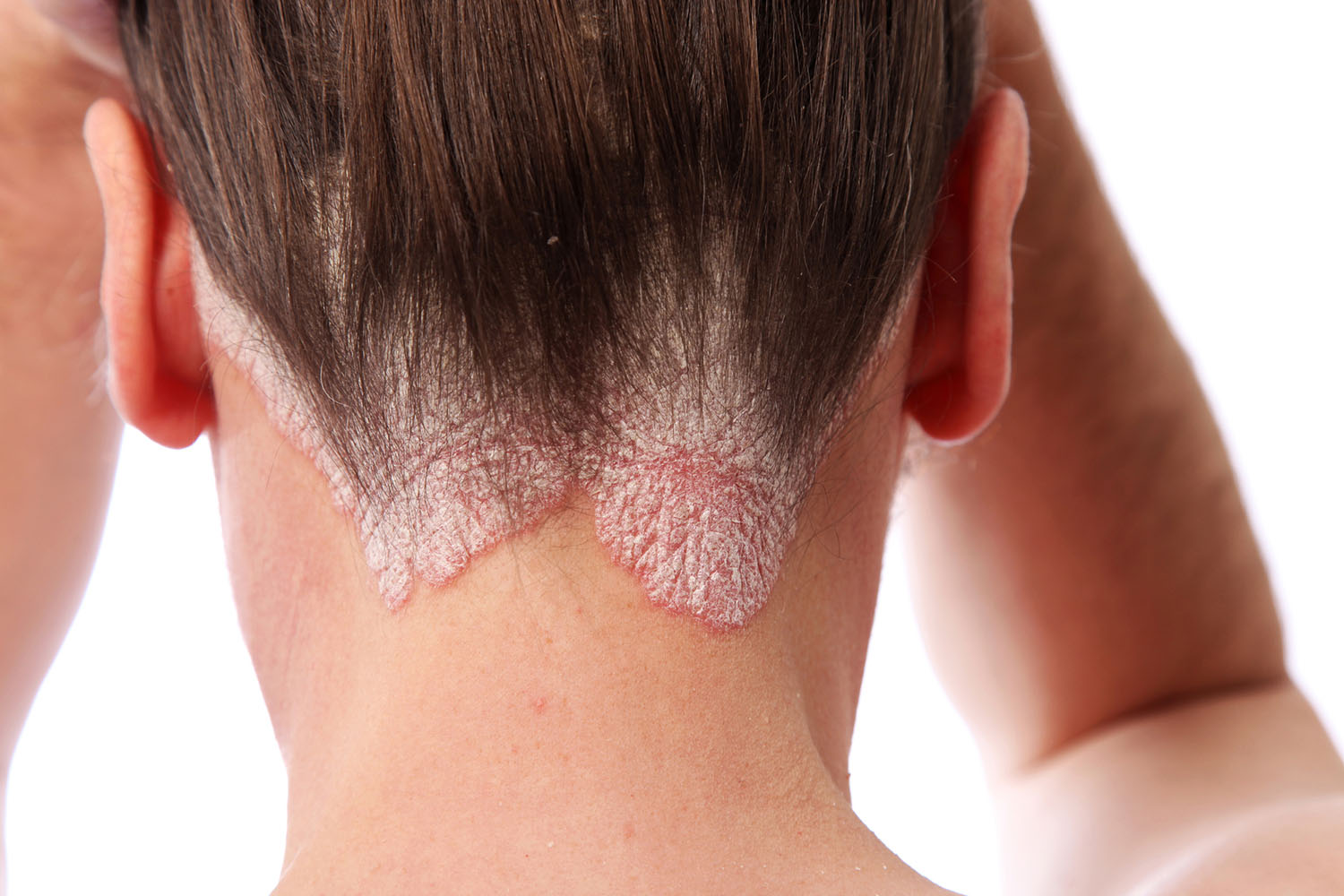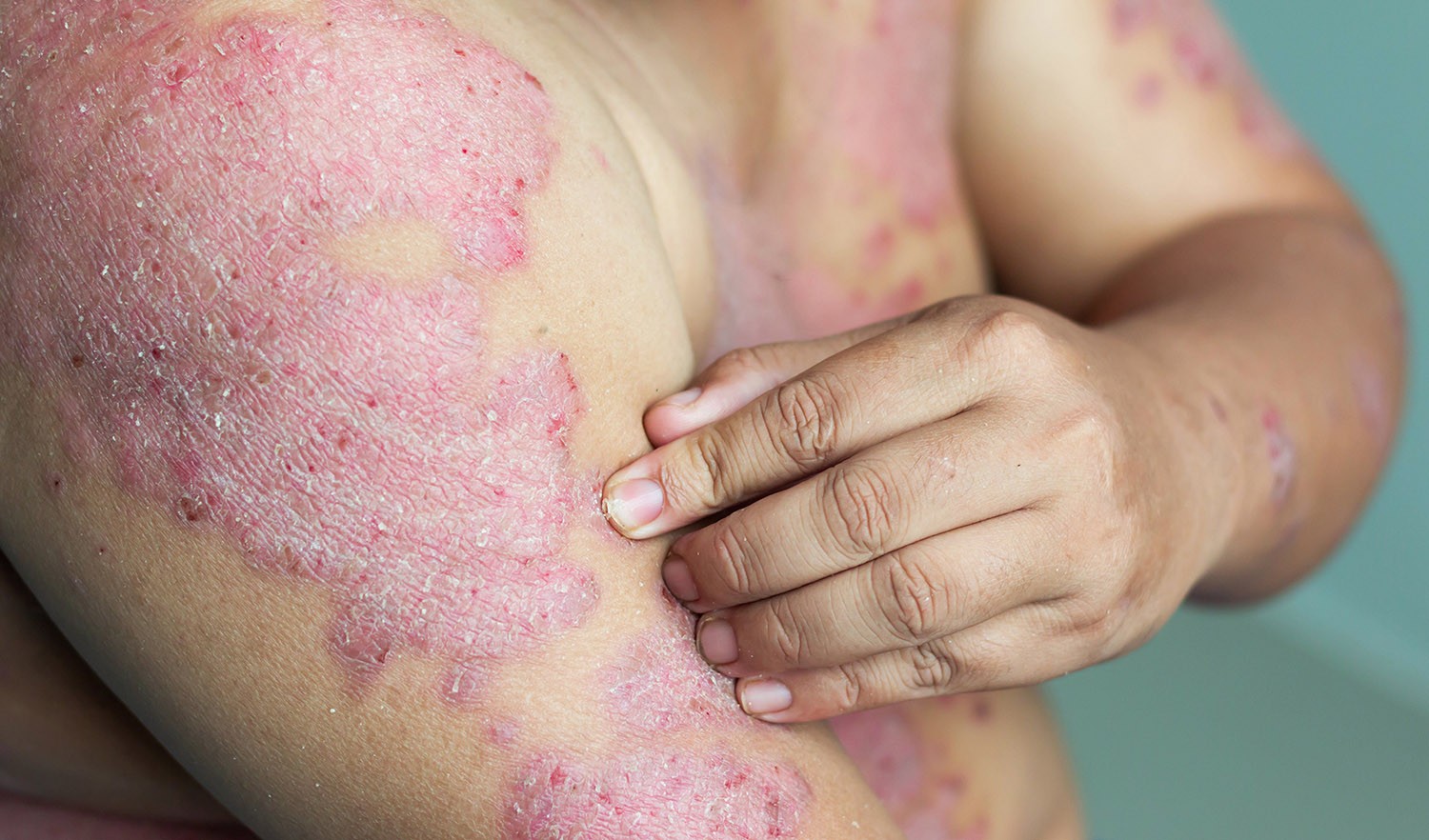Psoriasis Awareness

Story by Cheri Woodsmall
When Michelle* was 4 years old, she was diagnosed with psoriasis. She was, of course, too young to understand her diagnosis at first. Instead, it affected her mother the most.
She took Michelle to see dermatologists and tried different medications and home remedies. Her mother taught her sisters how to apply the topical medications in case she could not one day. Michelle thinks part of her mother knew being diagnosed with psoriasis could have a negative impact on her life.
As a teenager, Michelle noticed negative attention that was drawn to her whenever she showed her skin. The looks of disgust and the comments people made. It was as if what she had was contagious, and people were afraid to get too close. It never felt good. She felt ashamed of her skin.
When she finally spoke to a dermatologist, her only question was, “How do I get rid of this?” He explained that what she had was chronic, and there was no cure. She would have this for a lifetime, and she would have to learn to live with it and control it.
August is Psoriasis Awareness Month, making it a good time to have an annual skin checkup and learn about signs and symptoms of this persistent inflammatory skin disease. Over 125 million people worldwide have the disease. There are many different types of psoriasis, but plaque psoriasis makes up over 80% of those diagnosed. This disorder mainly affects the skin, but can lead to joint pain, and other circulatory and cardiovascular issues if left untreated. Your primary care physician can diagnose psoriasis, but they may refer you to a dermatologist for more specialized treatment.

NOT JUST A TOPICAL SKIN DISEASE
Psoriasis is not just a skin disease. It is an autoimmune condition that can have widespread systemic effects, which are best described in skin, joints, and heart. Skin cells regenerate at a faster than normal rate resulting in red, scaly patches on the skin which can become itchy and inflamed. Those diagnosed have a higher risk for developing other conditions like hypertension, diabetes, obesity, and psoriatic arthritis – which is stiffness and swelling in the joints caused by psoriasis. Genetics play a large role in developing the condition, but environmental factors can cause flare ups as well. Stress, smoking, sunlight exposure, and heavy alcohol consumption can all lead to a worsening of symptoms. Psoriasis is not contagious and cannot be passed via skin-to-skin contact.
CAN IT BE CURED?
Dermatologists have many tools to help manage the disease and, in many cases, make it appear to be gone, but there is currently no cure. However, there are many treatment options available depending on the severity of your condition. Most doctors will begin treatment with a topical corticosteroid in the form of an ointment, cream, or shampoo. Psoriasis can also be treated with oral or injected medications. Certain light therapies are effective too. Over-the-counter products made with coal tar or salicylic acid are FDA approved for treating psoriasis, but only use these products under a doctor’s close supervision. If you think you are developing psoriasis, talk to your physician for a proper diagnosis and a treatment plan that is catered to your symptoms.

WHAT ARE THE SYMPTOMS OF PSORIASIS?
Psoriasis can develop anywhere on the body but commonly affects the elbows, knees, belly button, buttocks, and scalp. It also shows up on the legs, back, nails, and the palms or soles of the feet. An outbreak can last for weeks or months, and it is a condition that can clear up and then reappear.
- Patches of raised red skin
- Thick, white, or silvery scales on the skin
- Inflammation
- Itchy, flaking or burning skin
- Dry, cracked skin that bleeds
- Swollen and stiff joints
In addition, a variety of environmental factors may increase risk or aggravate the condition:
- Allergies
- Emotional or physical stress
- Excessive drinking or alcoholism
- Excessive sun exposure and sunburns
- Excessive scratching
- Pregnancy and hormonal changes
- Medications for high blood pressure, arthritis, and mood disorders
- Skin infections
- Skin injuries including cuts and scrapes, bug bites and piercings
- Smoking
- Streptococcal, tonsillitis, and bronchitis
- Weight gain
Some sufferers report the condition gets worse in the winter and improves in warmer months, warmer climates, or with increased sunlight exposure.
WHAT ARE THE COMMON TYPES OF PSORIASIS?
There are five different types of psoriasis all characterized by abnormal skin, as outlined below:
1. Plaque — This is the most common form of psoriasis, encompassing approximately 80% of all cases. Plaque psoriasis presents as inflamed red patches covered with a silvery, white buildup of dead skin cells (known as plaque). Diseased skin is itchy and painful and can occur anywhere on the body, but commonly affects the scalp, knees, elbow, and lower back.
2. Guttate — Guttate psoriasis is the second most common form and occurs in about 10% of people. This form of psoriasis most commonly presents in childhood or young adulthood and is characterized by small, pink, dot-like lesions. These commonly present on the torso, arms, and legs.
3. Inverse — Areas of red, shiny, and inflamed skin are hallmarks of inverse psoriasis. This form of the disease is found in body folds, such as behind the knee, under the armpits or breasts, in the groin, or in the skinfolds around the genitals. Interestingly, many people with inverse psoriasis simultaneously have another form of psoriasis elsewhere on the body.
4. Pustular — Pustular psoriasis is a rare form of the disease that generally occurs in adults. This form is characterized by white pustules or pus-filled blisters surrounded by red, inflamed skin. It is often localized to small areas of the body and presents on the hands or feet.
5. Erythrodermic — Erythrodermic psoriasis is a severe and very rare type of psoriasis. It presents as widespread, fiery redness over large sections of the body and causes the skin to come off in sheets. This form of psoriasis occurs in about 3% of people who have psoriasis, most commonly in those with unstable plaque psoriasis.
As a result of the easily distinguishable characteristics of psoriasis, diagnosis typically occurs after a simple physical examination, although a biopsy may also be utilized to confirm disease.

HOW TO TREAT IT
Don’t delay a visit to the dermatologist if you think you may have psoriasis. Your doctor can work with you to develop a plan of care and assess environmental triggers and other lifestyle factors that could be making the condition worse.
Topical and systemic treatments can ease irritation, improve the appearance of the skin, and help manage flare-ups, but it requires continuous therapy to control it. Topical treatments can be applied directly on the affected skin to help with inflammation and irritation, whereas oral medications or a shot have more system-wide effects. Phototherapy, or regular doses of moderate sunlight, may help reduce psoriasis lesions.
For many cases, treatment options include:
- Topical corticosteroids
- Vitamin D analogues
- Prescription retinoids
- Coal-tar ointments and shampoos
There are also treatments that affect the entire body including pills and injectable medications.
Lifestyle changes such as moisturizing, quitting smoking, reducing alcohol, dietary changes, and managing stress may reduce psoriasis. Paying attention to what is in products and switching to chemical-free soaps and cosmetic products can also help with flares and outbreaks.
Some people try natural remedies, herbs, and vitamins for relief. Epsom salts and Dead Sea salt baths, aloe vera, fish oil, and cayenne, along with a variety of essential oils, may improve symptoms of psoriasis.
The good news is there are effective, ground breaking treatment options available. You do not have to hide, keep your skin covered, or avoid social situations. Most skin conditions, especially chronic ones like psoriasis, need to be monitored and managed by a board-certified dermatologist.






